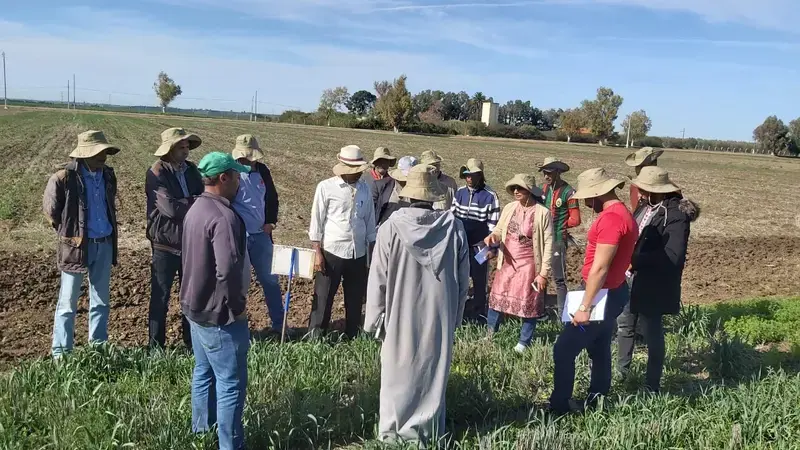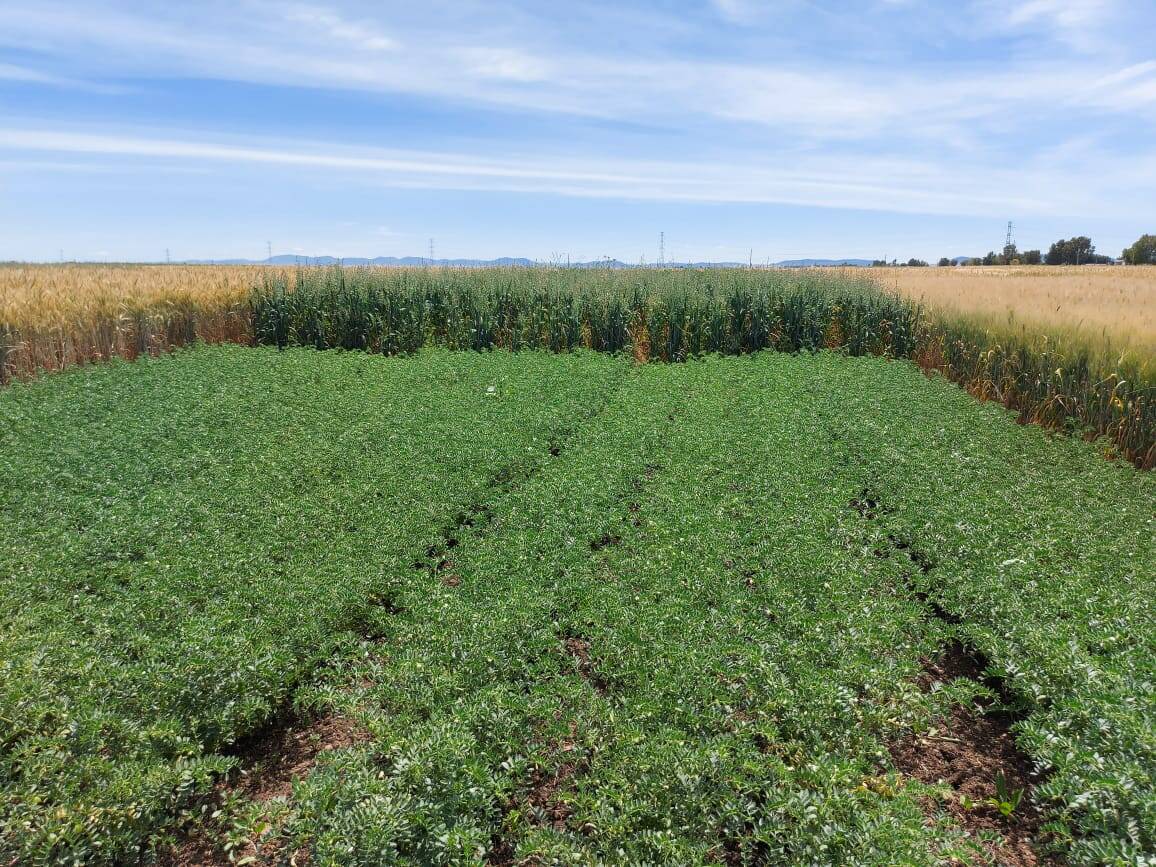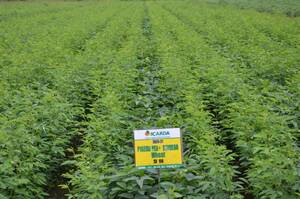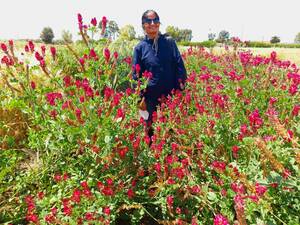Female Agronomists in the Drylands - Diversify, Enrich, and Restore

Across Morocco, India, Nepal, and Uzbekistan's sweeping, and at times desiccated tracts of land, two ICARDA agronomists are researching crop associations to improve the soil, make the most out of scarce water, and boost farmers' income.
Dr. Mina Devkota and Dr. Rajni Sinha have set themselves a meaningful yet complex mission: to rehabilitate the dry regions' soils, broken down by decades of intensive tillage, overgrazing, overuse, and damaging industrial farming practices inherited from the 1950's Green Revolution.
Monocropping, for example, consists in cultivating a single crop, over and over for decades, on the same tired piece of land. Often coupled with an increasing reliance on chemical herbicides and fertilizers, these combined practices greatly impoverish the soil's microbiome and its ability to transfer vital nutrients to the crops.
The two scientists are adamant that such methods are unsustainable destructive and entirely unfit to guarantee long-term food security.
Instead, they bet on diversified cropping systems.

Based in Morocco and India, respectively, Dr. Devkota and Dr. Sinha -alongside their local research partners- have been running a multitude of field trials for years, in which they associate diverse varieties of cereal, legume, and forage crops to find out which sequences are the most beneficial to farmers, the soil, and the environment.
"The idea is not to tell farmers that they cannot grow cereals, not at all, but to demonstrate that during or after their cereal harvest, the land can still produce one, sometimes two additional crops with the right, environmentally-friendly approach," she says. This also increases farmers' income and food security.
There are three main ways to associate crops on a field, explains Dr. Sinha. Farmers can either cultivate two or more crops simultaneously (intercropping), plant crops in relay (sown before the main crop is harvested), or in rotation (sown after the previous crop's harvest). "Our work is to find out which crop associations produce the most benefits to farmers and soils," she explains.
Because they constitute a great source of nutrition and are easy to cultivate, legumes are a significant cornerstone of diversified systems. Pulses' fantastic ability to capture atmospheric nitrogen and embed it into the soil contributes to restoring soil health and decreasing farmers' reliance on chemical inputs.
Policymakers increasingly see the value of diversifying crops
In a country like India, where 60% of the population is employed in the primary sector, and agriculture makes up 18% of the Gross Domestic Product, improving rural livelihoods is crucial. To that effect, Indian Prime Minister Narendra Modi announced in 2017 a 5-year plan to double farmers' income by 2022.
"Since crop yields from monocropping have reached a plateau and show no sign of improving, one of the best paths to achieve better farming income is through diversified cropping," Dr. Sinha explains.
Introducing one or two additional crops to a cereal-based system can also protect against crop failure from pests and diseases. "If a farmer grows pigeon pea as an intercrop with soybean, he is certain not to experience total crop failure in any given year and to secure a year-round income," she adds.

At the CGIAR/ICARDA Amlaha Research Station in Central India, Dr. Sinha has identified the diversified cropping system with the highest return in terms of water productivity and farmers' income. "Planting cotton plus soybean, followed by chickpea and mung beans in the rotation is the best sequence to follow for farmers in the region," she explains.
In Morocco, where Dr. Devkota is based, the government announced in November 2021 its plan to dedicate one million hectares of arable land to Conservation Agriculture by 2030. Conservation Agriculture involves little to no disturbance to the soil, a system of crop rotation for soil regeneration, and permanent soil cover to lock moisture in.
This large-scale sustainable farming endeavor, made possible by the close scientific cooperation between ICARDA and the Moroccan Institut National de la Recherche Agronomique (INRA), will turn the country into a trailblazer in conservation agriculture in the drylands.

"This is a wonderful opportunity to try out diversified cropping systems at scale," says Dr. Devkota. "The vast majority of Moroccan farmers only have one crop a year. Most of them continually grow wheat and barley under a monocropping system, which is devastating for the soil," she explains.
Convinced of the merits of diversifying cereal-based systems with food and forage legumes in rotation, Dr. Devkota set out to try various crops' associations under conventional and conservation agriculture systems.
Multiplying crops, security, and income sources
So far, the Morocco-based agronomist has tested multiple combinations of cereal and legume forage crops under a mixed crop-livestock system. "Because half of the Moroccan farmers' income comes from livestock, cultivating quality feed is essential," she says.
"These are super crops: they require little to no additional water to grow, have no negative effect on the lentil's yield, make great use of rainwater, and provide good income and livelihood security to farmers," she says.
Perhaps not surprisingly, the COVID-19 pandemic has pushed for the broader adoption of diversified farming systems worldwide. "As people started losing their jobs in a lot of industries as the pandemic progressed, the value of land kept expanding," she said.
Although lasting constraints are slowing down the adoption of diversified cropping systems in the drylands (such as the critically low availability of forage seeds - currently being researched), Drs. Devkota and Sinha are convinced that diverse farms will be the best equipped to respond to today and tomorrow's environmental, nutritional, and food security challenges.
-------------------------------------------
Further readings:
